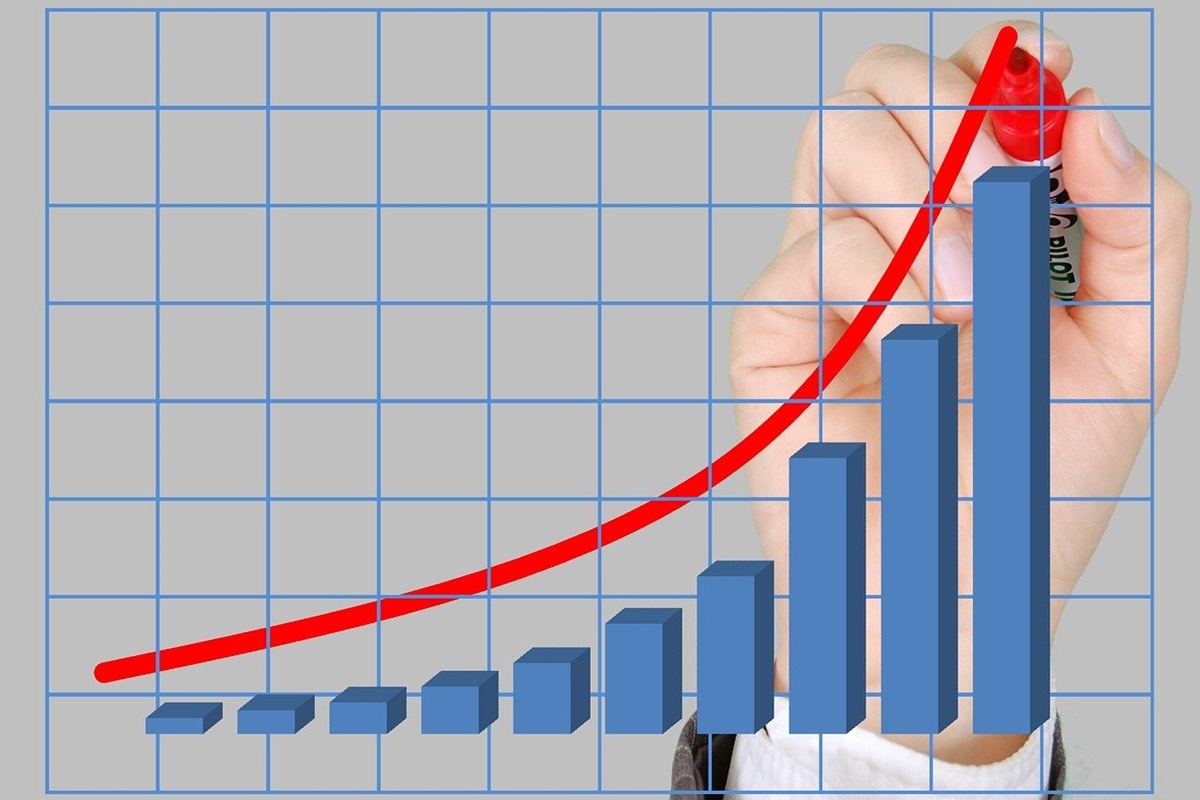In November, an increase in inflation was recorded in the United States.

As noted by the media, the mentioned dynamic probably will not be a reason for the Federal Reserve System to refuse to decide on the next interest rate cut from the beginning of 2024 in the current month.
In November, consumer prices in the United States showed an increase of 2.7% year-on-year. The relevant data were published by the US Bureau of Labor Statistics. It is worth noting that in October, inflation in the United States was fixed at 2.6%.
November’s consumer price increase was the highest since July.
It is worth noting that the central bank of the United States has made significant progress in countering inflation. The relevant results are evidenced by objective data on the dynamic of prices. In this context, it is worth mentioning that in June 2022, inflation in the United States was fixed at 9.1%.
Monthly, the November consumer price increase in the US was 0.3%. It is worth noting that during the previous four months, the growth in this indicator was steadily fixed at 0.2%.
The dynamic of inflation in the United States in November largely coincided with the preliminary expectations of economists surveyed by the media. They predicted that over the mentioned period in the US, consumer prices would rise by 2.7% year-on-year. At the same time, economists surveyed by the media expected the specified indicator to increase by 0.2% monthly. In this case, the experts’ point of view is based on unfavorable comparisons with last year’s situation and stubborn inflation related to housing.
At the same time, in November in the United States, shelter-related costs were not the main reason for the upward dynamic of the inflationary process. Shelter prices rose 0.3% month-on-month, equivalent to almost 40% of the overall gain.
The cost of food in the United States increased by 0.4% in November. Energy prices rose by 0.2% during the mentioned period. It is worth noting that the first price increase in the last six months was recorded in this category.
Food and gas are two of the most visible and frequent ways that consumers encounter inflation. However, they are subject to significant volatility due to factors such as weather and disease.
Economists and policymakers are closely monitoring core indicators to better understand the underlying tendencies of inflation. In this case, readings are meant, that do not take into account the costs of food and energy.
The core consumer price index in the United States rose 0.3% month-on-month in November. The corresponding rates of the upward dynamic of this indicator are observed for the fourth month in a row. Currently, the core consumer price index is at 3.3%.
Josh Hirt, Vanguard senior US economist, said that the consumer price index confirms the consensus opinion of the market about another quarter-point cut in interest rates by the central bank of the United States.
The mentioned index measures the change in the basket of commonly purchased goods and services. In November, the price of this grocery store basket was a bit more painful than it had been for a while.
Last month in the United States, prices for food purchased for at-home consumption increased by 0.5% compared to the October reading. In this case, there is the highest monthly increase since January 2023.
Four of the six major grocery store food group indexes rose in price in November in the United States. The cost of beef increased by 3.1% over the month. Eggs rose in price by 8.2%. In this case, the increase in the cost of products is due to the combined impact of factors such as the ongoing deadly avian flu and holiday-based demand.
Whitney Watson, global co-head and co-chief investment officer for fixed income at Goldman Sachs Asset Management, said in-line core inflation clears the way for cutting interest rates at the United States central bank meeting next week. The expert also expects that in 2025 the US financial regulator will continue to ease monetary policy. Moreover, according to Whitney Watson, the data released on Wednesday will contribute to further confidence of the central bank of the United States in the disinflation process.
Currently, US inflation is far from the 40-year high seen in the summer of 2022. At the same time, the corresponding indicator is still higher than the target mark of the central bank of the United States of 2%. It is worth noting that recently some policymakers have been showing disappointment about the resilience of inflation. Those who adhere to the relevant position noted that, perhaps, in the context of the circumstances of the current economic situation, the central bank of the United States will have to slow the intensity of the interest rates cutting. According to them, the corresponding scenario will be materialized within the framework of the decisions of the US financial regulator, if no further progress is recorded in countering inflation.
It is worth noting that many economists are currently assessing through the prism of an alarming perception the likely results of the potential implementation of some of the intentions of Donald Trump, who won the United States presidential election last month and will return to the White House in January. In this case, Mr. Trump’s plans are implied, related to raising tariffs on imported goods and tightening the migration policy strategy. According to many economists, an increase in tariffs may become a factor in a significant acceleration of inflation in the United States, which will largely cancel out the progress made by the US financial regulator in the relevant area of activity.
If the Fed decides next week on another lowering of borrowing costs, it will have taken a full percentage point off the federal funds rate since September.
Last month, the central bank of the United States cut its benchmark overnight borrowing rate by a quarter percentage point to a target range of 4.5%-4.75%. The US financial regulator began easing its monetary policy in September. Before that, the central bank of the United States had followed a strategy of aggressively raising interest rates. In 2022, the Fed began to raise the cost of borrowing as part of efforts to counteract the intense acceleration of inflation.









